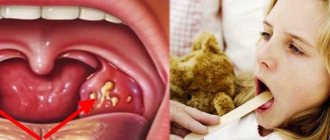- Causes of anuria and its manifestations
- Diseases associated with anuria
- Which doctors should I contact for anuria?
- Treatment of anuria
- Treatment of anuria at home
- Anuria during pregnancy
Anuria is the absence of urine in the bladder (daily diuresis is no more than 50 ml). This dangerous disorder is often a sign of kidney failure and other life-threatening conditions.
What causes anuria
The pathology is caused by impaired functioning of the renal system. Depending on the specific causes of anuria, several types are distinguished.
- Arenal - occurs in the absence of kidneys (congenital pathology or a consequence of organ removal).
- Prerenal - develops as a result of shock, blockage of renal vessels, hemolysis.
- Renal - observed in diseases and damage to the kidneys: glomerulo- and pyelonephritis, blood transfusion shock, sepsis, LDS (long-term compression syndrome).
- Postrenal - occurs when the outflow of urine from the kidneys is impaired due to stones, tumors, scars, or uric acid crisis.
Risk factors
A high risk of developing anuria occurs with renal failure, collapse, ingestion of nephrotoxic substances, surgical interventions on the genitourinary system, and systemic autoimmune diseases.
Complications
Anuria is a sign of a serious pathology of the excretory function of the kidneys. If it is not quickly restored, general intoxication of the body and hemolytic-uremic syndrome develop.
Severe uremia is deadly. It negatively affects the brain, which is accompanied by the appearance of symptoms of neurological disorders: severe weakness, drowsiness, confusion, convulsions. If the patient's condition is not corrected at this stage, renal failure and uremic coma occur, which in most cases ends in death. If the patient does recover from the coma, he is left with a neurological deficit that cannot be completely eliminated, i.e. the person essentially remains disabled.
Symptoms and clinical picture of anuria
The symptoms of anuria largely depend on the cause of the condition. With a-, pre- and renal anuria, the patient’s general condition is slightly disturbed due to the compensatory function. From the 3rd day, uremic signs of anuria appear: acidosis, thirst, nausea, and possible vomiting. From the 6th day, the clinic of central nervous system damage begins: increased drowsiness, delirium, coma. Due to increased potassium levels in the blood, cardiac disorders occur.
Postrenal uremia is quite rare and at the same time one of the most severe pathologies. In the vast majority of cases, surgery is required.
Prevention
Prevention of the development of ischuria is timely diagnosis and elimination of its causes.
To prevent the development of the disorder, contact a specialist at the first symptoms.
For the purpose of prevention, it is advisable for men over 45 years of age to undergo an examination by a urologist annually, as well as a urine test and ultrasound of the genitourinary organs.
The risk group also includes women who have given birth and had abortions many times, and those representatives of the fairer sex who have undergone gynecological operations or suffer from diseases of the pelvic organs. These women should also visit a urologist once a year.
Diagnosis of anuria
First of all, you should find out what specific condition the patient has - urinary retention or anuria, since emergency care and treatment differ significantly.
During the interview, it is necessary to clarify whether the patient wants to urinate, whether there is a feeling of fullness in the bladder. To make a diagnosis, excretory urography is required. During the study, urine is contrasted in the renal cavity or is not visualized at all, which confirms the presence of anuria.
Diagnostic methods
It is recommended to conduct a number of additional studies to clarify the cause of this condition.
Additional methods for diagnosing anuria:
- Ultrasound of the urinary system;
- Abdominal CT scan;
- general blood analysis;
- blood chemistry;
- cystoscopy.
Urine tests for anuria are not performed due to the lack of material for research.
How to identify signs of difficulty urinating?
Difficulty urinating is one of the common signs of pathologies of the urinary system. Although this symptom is more common in men, women should also be alert to signs of urinary obstruction.
From a medical point of view, this disorder is included in the concept of “dysuria”. Dysuric syndrome combines any urinary disorder. As a rule, such a clinical picture indicates diseases of the lower parts of the urinary system, but the infection in women spreads with such speed that a few days can become decisive, and simple inflammation can develop into a serious infectious disease.
If you suspect problems with urine output, you can compare your situation with normal indicators of the functioning of the urinary organs.
It has been proven that a healthy body excretes on average about 75% of the ingested fluid per day through the kidneys, that is, a person excretes approximately 1.5 liters of daily urine (the norm is 2 liters of fluid per day).
The frequency of urination during the day for women is from 4 to 9 times a day, and at night there should be no more than one trip to the toilet. If during the day the number of visits to the ladies' room sharply decreases, difficulties arise when urinating, and after this process there remains a feeling of a full bladder, you need to contact a specialist to solve such problems.
It's time to see a doctor if you experience:
- weakening of the force of the stream during urination;
- feeling of lethargy or thinning of the stream;
- urine dripping;
- pain during urination;
- the need for constant straining when passing urine;
- feeling of incomplete emptying of the bladder.
Treatment regimen for anuria
For successful treatment of anuria, it is necessary to ensure the outflow of urine from the body and carry out intoxication measures.
Basic treatment methods and contraindications
The main method of treating pathology is bilateral drainage of the upper urinary tract. To do this, catheterize the ureters or install a nephrostomy. If urine is present in the drains, we are talking about postrenal anuria.
In extreme cases, when choosing how to treat anuria, uretero- or pyelotomy and hemodialysis are used.
Where to go if you have problems with urination?
There is a myth that absolutely all problems associated with urinary disorders are the field of activity of urologists. In fact, often the problem is not hidden in the urinary system itself (or, on the contrary, it is a serious disease that is treated by doctors of several specialties).
When characteristic complaints first occur, you should contact your family doctor or therapist. A general specialist will determine the specifics of the problem and will be able to prescribe treatment independently or refer you to the right specialist doctor.
The causes of difficulty urinating are usually determined during an appointment with a urologist or nephrologist. Also, to identify related disorders of the genitourinary system in women, gynecologists and neurologists can be involved. If the situation becomes serious, periodic complaints of difficulty urinating develop into a situation where independent urine excretion is impossible, you need to call an ambulance. Emergency physicians will place a urinary catheter and suggest a site for subsequent hospitalization. Only in a hospital can the cause of acute urinary retention be reliably determined and successfully eliminated.
Forecast
Modern technologies and advanced techniques used in our clinic guarantee favorable prognoses in the vast majority of cases of treatment of urinary retention.
In our center, ischuria is successfully treated - effective and timely treatment aimed at eliminating its causes gives positive results, and relapses of the pathology practically do not occur.
If you are alerted by the first alarming symptoms, do not waste time: call us, make an appointment - our doctors are always ready to help you!
Urinary retention syndrome in newborns
REASONS: I. Congenital 1. The presence of a thin film covering the external opening of the urethra (often with hypospadias) 2. Swelling of the foreskin as a result of difficult childbirth with breech presentation. 3. Phimosis 4. Calcification of the bladder (when calcifications are found in the area of the external opening of the urethra) 5. Large ectopic ureteroceles II. Acquired Inflammatory processes in the area of the external genitalia (in the form of acute vulvitis in girls and balanoposthitis in boys).
CLINICAL PICTURE Children stop urinating and become restless. The bladder is stretched above the womb and can reach the level of the navel. When examining the external genitalia in such children, it is possible to identify visible external causes. A plain X-ray of the urinary system shows calcification of the urethra and bladder; urethrocystography shows obstructions along the urethra in the bladder, bladder diverticulum, urethrocele.
EMERGENCY - a careful attempt to catheterize the bladder - if catheterization is unsuccessful, puncture the bladder. The puncture is performed 2-3 cm above the symphysis of the pubic symphysis; hospitalization in the pediatric surgical department is indicated.
Anuria The symptom of anuria is characterized by the absence of urine flow from the upper urinary tract into the bladder. In contrast to acute urinary retention, with anuria the bladder is empty. A sign of anuria is the absence of urination for 72 hours or more.
REASONS 1. Prerenal - (85%) disturbance of blood flow to the kidneys (acute hypoxia and hypercopnia, trauma, hypovolemic, hemorrhagic, traumatic and toxic shock, etc.), hyperthermia. 2. Arenal - in newborns with renal agenesis or 2-sided polycystic disease. 3. Renal - (12%) thrombosis of the renal veins and arteries, disseminated intravascular coagulation, intrarenal obstruction (urate nephropathy, hemo- and myoglobulinuria, cystic and non-cystic dysplasia, intrauterine infection, pyelonephritis). 4. Subrenal - (3%) congenital anomalies (bilateral stenosis of the pyeloureteral segment, ureterocele, posterior urethral valves, extrarenal compression). 5. Reflex - characterized by cessation of healthy kidney function as a result of the influence of various peripheral stimuli (rare in newborns).
CLINICAL PICTURE In the initial stage it is caused by a form of anuria. A common symptom is the absence of urine in the bladder. In later stages, the leading symptoms are acute renal failure.
Clinic of acute and renal failure in newborns. As in other age periods, in newborns with acute renal failure there are 4 stages: pre-nuric oliguria, anuria, polyuria and recovery. In the initial stage of acute renal failure, the clinical picture is dominated by the symptoms of the pathological process, which is complicated by kidney damage (newborn asphyxia, SDR, shock, disseminated intravascular coagulation due to sepsis and hypoxia). Oliguria, metabolic acidosis, hyperkalemia, azotemia are usually obscured by manifestations of the underlying disease. During this period, it is extremely important to promptly identify and prevent the moment when functional changes in the kidneys are replaced by organic lesions. This is also due to the fact that functional renal failure occurs much more often in newborns than at older ages. Its high frequency can be explained by the relatively high vascular resistance of the kidneys at low perfusion pressure, increased sensitivity to hypovolemia, hypoxia and acidosis.
The rate of development and severity of organic changes are determined by the degree and duration of the damaging effect. In newborns, early on the 3rd-4th day of life, postnatal organic kidney damage, as a rule, does not have time to develop. The gestational age of the child (the younger it is, the more severe the process) and the adequacy of treatment are also important.
Following the oligoanuric stage comes the polyuric stage of acute renal failure, or the period of restoration of diuresis. During this period, the water excretory function of the kidneys initially appears. Diuresis is 2-3 times higher than the age norm and is combined with low urine osmolarity. The absolute losses of sodium and potassium ions in the urine are high, but the relative excretion of sodium ions is less than that of water. Therefore, hyponatremia is replaced by hypernatremia, and hyperkalemia by hypokalemia. Azotemia levels may remain high for some time or even continue to increase within 2-3 days. There is no noticeable improvement in the child's condition; lethargy, muscle hypotonia, and hyporeflexia remain. Cuts and paralysis may occur. The urine contains a lot of protein, leukocytes, erythrocytes, and casts, which is associated with the release of dead tubular epithelial cells and the resorption of infiltrates.
In some cases, in children in the first months of life, acute anuria may occur against the background of acute apostematous nephritis, which is one of the foci of sepsis. Microbial embolism of arterioles (apostome) leads to the formation of multiple infiltrates, swelling of the renal tissue with a sharp increase in intrarenal pressure. As a result, glomerular filtration rate decreases with “sudden” or gradually increasing anuria over several days. In addition to the hemostasis disorders typical of acute renal failure, these children have signs of severe infectious toxicosis. Treatment involves a combination of antibacterial therapy and surgery (dissection of the renal capsule to reduce compartment syndrome). As exudation and infiltration decrease, azotemia and metabolic acidosis gradually disappear in the patient.
Renal failure, caused by impaired development of the kidney parenchyma and obstructive uropathy, first begins to manifest itself towards the end of the first and during the second week of life. When combined with a secondary infection in the form of pyelonephritis, it can accelerate the process of decompensation. In case of malformations of the renal parenchyma (renal hypoplasia, agenesis, infantile type of polycystic disease), dysfunction is caused by the presence of a critical decrease in the mass of active nephrons. Suspicions about the possibility of kidney dysplasia arise if the mother has oligohydramnios during pregnancy and childbirth, or if the child has obvious stigmas of disembryogenesis (connective tissue formation, six-fingered fingers, absence of muscles of the anterior abdominal wall, etc.). As a rule, all variants of dysplasia are accompanied by hematuria and microproteinuria.
The clinical symptoms of acute renal failure, caused by tubular or cortical necrosis of the kidneys, appear from the 3-4th day of life. Its cardinal symptom is a persistent, treatment-resistant decrease in diuresis below 1 ml/(kg x h). Oliguria may alternate with anuria. Oligoanuria is combined with disorders of the central nervous system (depression, convulsions), gastrointestinal tract activity (anorexia, vomiting, unstable stools), respiratory failure (usually shunt-diffusion type) and cardiovascular disorders (tachycardia, less often “rigid” bradycardia, arterial hypertension ). A persistent increase in blood pressure against the background of anuria and preceding dehydration, polycythemia, infusions into the umbilical vessels should always suggest the possibility of thrombosis of the renal arteries.
Renal artery thrombosis in the clinic is manifested by unstable hematuria, unstable hypertension, increasing heart failure and neurological symptoms. Renal vein thrombosis is less common. With bilateral thrombosis of the renal veins and inferior vena cava, acute renal failure may develop. It is characterized by palpable large kidneys, echographically: the kidneys are enlarged in size, the echogenicity of the parenchyma is increased, the disappearance of corticomedullary differentiation, with a possible adrenal hematoma, macrohematuria in a general urinalysis. The whole variety of manifestations of acute renal failure fits into 4 clinical and laboratory syndromes: hyperhydration, impaired CBS, impaired electrolyte metabolism and uremic intoxication.
Overhydration is characterized by a progressive increase in edema (in premature babies - sclerema) up to anasarca, pulmonary edema, eclamxia.
The nature of CBS disorders depends on the relationship between impaired acid-excretion function of the kidneys and the influence of complications from the respiratory system and gastrointestinal tract. In uncomplicated cases, metabolic acidosis with acidotic breathing and respiratory alkalosis is typical. In case of complications, acidosis is replaced by metabolic alkalosis (prolonged vomiting) or combined with respiratory acidosis (pulmonary edema).
The syndrome of electrolyte metabolism disorders in typical cases is characterized by hypornatremia, hypochloremia, hypermagnesemia, hyperphosphatemia, hypocalcemia, combined with clinical symptoms reflecting, first of all, the effect of these disorders on the central nervous system and blood circulation (drowsiness or coma, convulsions, cardiac arrhythmias, etc.). In acute renal failure, hyperkalemia would be expected as a pathognomonic laboratory finding. However, in some patients, despite a sharp decrease in diuresis, the concentration of potassium ions in the blood plasma decreases.
Hypokalemia in these cases is caused by vomiting and profuse diarrhea, which contribute to the excessive release of potassium ions from the body even in conditions of anuria. Uremic intoxication is clinically manifested in the appearance of skin itching, anxiety or lethargy, uncontrollable vomiting, diarrhea, and signs of cardiovascular failure. According to laboratory data, in newborns the degree of azotemia more clearly reflects the level of creatininemia, rather than an increase in urea concentration.
TREATMENT Establishing the cause of anuria determines further surgical tactics. Surgical intervention for anuria can be quite effective only in combination with intensive conservative therapy, the purpose of which is to correct physical and chemical disorders.
Fluid administration should compensate for minor losses of both water and urine. They are calculated separately. Losses depend on birth weight and gestational age and are at 1 week of life: with weight <1250 g 60 ml/kg/day 1250-1750 g 30 ml/kg/day >1750 g 20 ml/kg/day
For all newborns over one week of age, fluid loss is approximately 30 ml/kg/day. The volume of urine excreted in a newborn every 12 hours must be replaced in the next 12 hours. Daily weighing is carried out. Lack of mass increase is the goal of limiting the water regime. Na should not be administered unless there is hyponatremia.
The choice of water loading path is determined by the child’s condition. The more severe it is, the more indications for catheterization of central veins (subclavian, femoral) and intravenous infusions. When administered intravenously, 1/5 of the total volume of the infusion medium should be blood substitutes or sodium bicarbonate solutions. The latter are indicated in cases where the patient does not vomit and has oligoanuria or damage to the kidney tubules. Sodium bicarbonate is prescribed when the child’s blood pH drops below 7.2 and when the base deficiency is less than 10 mmol/l. The younger the child's gestational age, the less concentrated sodium bicarbonate solutions should be used. For premature babies, isotonic concentrations (1.3-0.9%) are optimal. This prevents plasma hyperosmolarity and the possibility of intracranial hemorrhage. In addition to intracranial injections of alkalizing solutions, it is advisable to use them during regular gastric lavages. The latter must be carried out with extreme caution if intracranial hemorrhage is suspected. To avoid the destruction of endogenous proteins, a carbohydrate infusion (15% dextrose) should be carried out.
Hyponatremia usually occurs not due to Na depletion, but due to overhydration. Until this is corrected, water should be limited.
Adverse consequences of hyperkalemia in newborns occur at relatively higher values of potassium ions in plasma (7-7.5 mmol/l) than in adults. First of all, in case of hyperkalemia, it is necessary to limit the administration of potassium to 1-2 mmol / (kg x day). Then a concentrated (10%) solution of glucose with insulin is administered. Then calcium sorbisterite 1 g / (kg x day) 2-3 in 2-3 doses or salbutamol 4 mg/kg/20 min. Scheme of emergency measures for hyperkalemia: calcium gluconate 0.5-1 ml/kg 10% solution IV for 5-10 minutes, sodium bicarbonate 2 mEq/kg IV for 5-10 minutes, glucose 0.5- 2 ml/kg 25% over 30 minutes with insulin 0.1 IU/kg IV.
Intravenous administration of calcium gluconate solution is also necessary for hypocalcemia (plasma calcium content less than 1.5 mmol/l). It should be noted that in case of renal failure, hypocalcemia is refractory to treatment and can cause recurrent seizures. Therefore, the patient needs to be given 50-100 mg/(kg x day) of calcium supplements in combination with vitamin D.
The improvement of renal hemodynamics is facilitated by the use of dopamine, etc. Dopamine exhibits its properties through dopamine and adrenergic receptors, increasing renal blood flow. Vasodilating properties and a diuretic effect are achieved by administering small doses intravenously (0.5-2 mcg/kg x day). Dopamine alone or in combination with furosemide is particularly effective in prerenal acute renal failure.
Intrarenal hypoperfusion with a partial pressure of oxygen of 10-20 mmHg. and ischemia of the renal tissue lead to a decrease in ATP production and damage to the tubules (S 3 segment and thick ascending limb of the loop of Henle) and interstitial tissue. The use of a cocktail in the form of an infusion of ATP 1% 1-2 ml in combination with ascorbic acid 25 mg, 25% magnesium sulfate solution 0.5-0.8 mg/kg replenishes the ATP content in tissues, which helps improve renal function.
Adequate diet therapy helps prevent excess catabolism and accumulation of nitrogenous products. Its essence is to ensure sufficient energy value of the diet (12 cal/kg x day, or 502 kJ) with a protein load of no more than 1 g/(kg x day). Nutrition should be provided primarily through a tube.
One of the most difficult problems in the treatment of long-term renal failure, which is accompanied by malformations of the urinary tract, can be considered anemia. Anemia may also occur in children undergoing dialysis due to chronic blood loss. Its correction is made through transfusions of red blood cells or washed red blood cells.
You should pay attention to the conservation period of the transfused transfusion medium and the permissible single volume of infusion. In newborns with renal failure, transfusion of blood and red blood cells is permissible with a collection period of no more than 3 days. To avoid hypervolemia, a child should not be given a single transfusion of more than 8 ml/kg body weight. Administration should be at a rate of 1-2 ml/min. The frequency of blood replacement transfusions depends on the degree of anemia, but should be no more than 1-2 times a week. Correction is carried out at Hb level < 80 g/l. These measures are usually sufficient to maintain homeostasis until acute renal failure is stopped.
FAQ
After ejaculation I want to pee, but I can’t. This is fine?
— During an erection, it is normally difficult to urinate. If the erection has passed, but it is still difficult to urinate, it is worth dealing with this in person.
Over the past two years, a not very pleasant problem has appeared. Two or three times during this period, before menstruation there is urinary retention and obvious swelling under the eyes. With menstruation, a lot of fluid is released. What needs to be examined and what is the reason?
- This is how premenstrual syndrome manifests itself. If these symptoms cause concern, then you can take diuretics on such days.
Ask a Question








